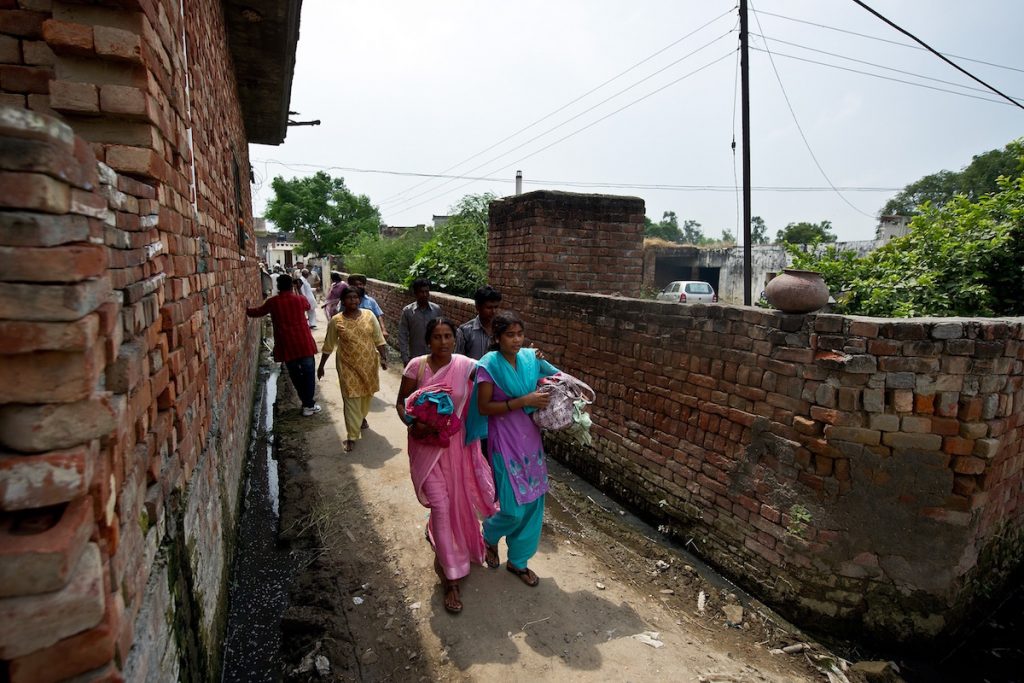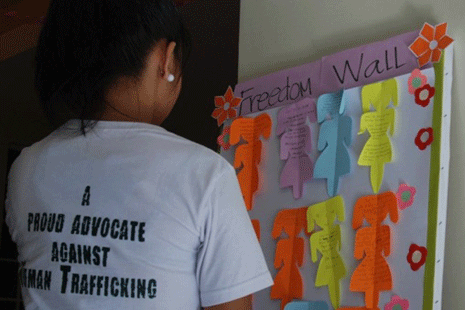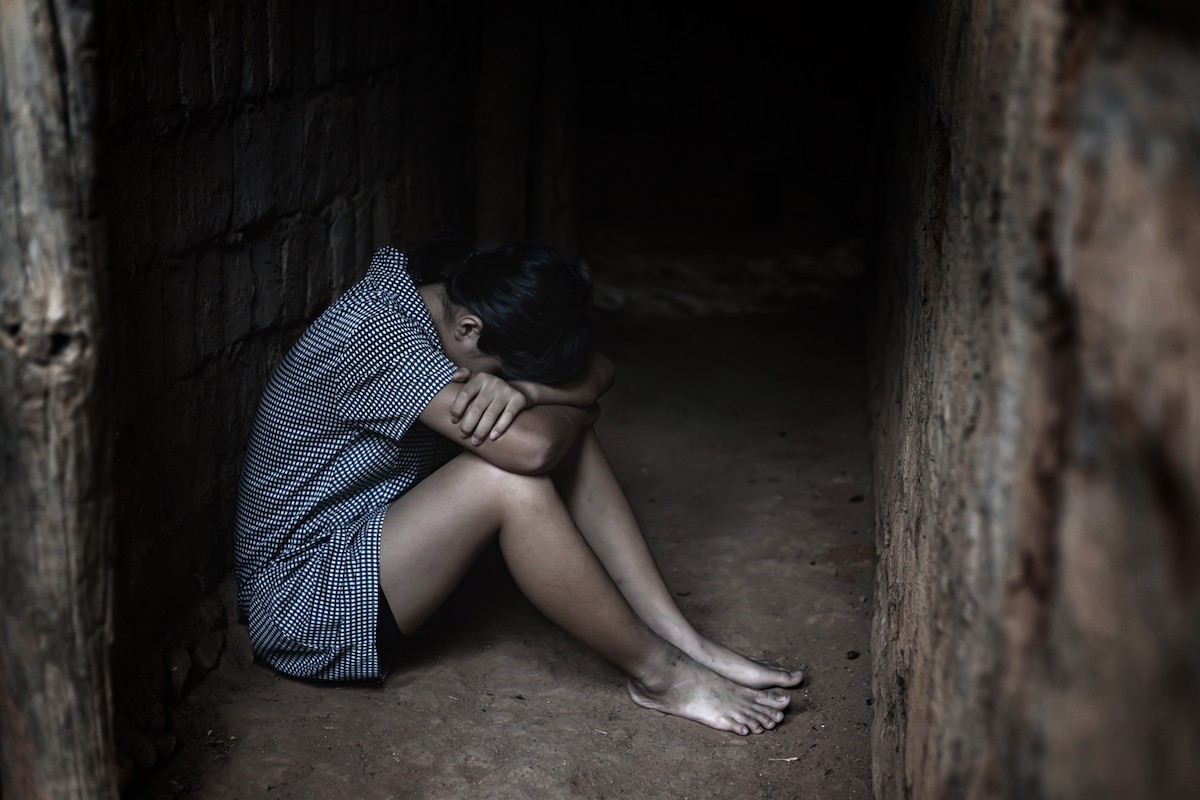Renuka Devi trembles with fear as she recalls her ordeal.
A year ago, she was sold in an open market by an agent who wooed her away from her village for a “job” in India’s capital, Delhi.
She was 14 years old then and was in the seventh grade in a government-run school in the northern state of Uttar Pradesh.
Her father was working at a brick kiln. Her mother was a homemaker. There was not enough to alleviate the family’s poor situation. Renuka wanted to help.
The lockdown brought about by the coronavirus pandemic in 2020 cast a dark spell on the country’s labor force, with factories and industries closing.
Renuka’s parents struggled to make both ends meet.
“I was told not to go to the school, and that I should learn some skills, such as dressmaking,” she says. “I seconded my parents because they were in need,” adds the girl.
In October, a group of men and women came to Renuka’s village. They were recruiting workers for a “job” in Delhi. They were able to persuade Renuka’s parents to let her work, supposedly as a call center agent.
“All she has to do is to make calls to a potential list of customers related to banking and financial schemes,” the recruiters told the family.
Renuka was promised 25,000 rupees, or about US$350, a month as salary.
There was no reason for the family to reject the offer. They readily accepted it and asked Renuka to pack her bags.
The next day, the girl left with the recruiters to Delhi where she was locked in a hotel room for days. Every time she would inquire about the job, she would be told to wait because she would be joining her office in a few days.
Renuka started to get nervous and harbor suspicions.
“They were inquiring about my passport, and there were times that they would take pictures and send it to some people abroad,” she says.
“I sensed that I was being sold for a few bucks,” Renuka recalls, adding that a hotel staff lent her a phone to call a cousin for help.
“I told her the location and begged for help,” she says.

Policemen arrived at the hotel with an anti-human trafficking team. Renuka was rescued and the recruiters were arrested.
It was the girl’s cousin who reported the trafficking incident to Swaraksha, an anti-human trafficking project by the Scottish Catholic International Aid Fund in Uttar Pradesh.
The program aims to prevent human trafficking and partners with groups in 25 villages. It has 30 women self-help groups, 30 youth groups, 31 child parliaments, and 11 children clubs in schools.
Uttar Pradesh, with nine districts bordering Nepal, is known to be a source, transit, and destination area for the trafficking of women for commercial sex, both within the country and across the border.
Commonly, victims are procured from Nepal, transported through Uttar Pradesh, and then sent to Delhi and Mumbai.
The victims are reportedly “prepared” for commercial sex through forced employment in Mumbai’s dance bars. Others are sent to Middle East countries.
In 2011, India was ranked seventh out of 196 countries in the global Trafficking Index in terms of risk for trafficking. The country was grouped with states that were identified at “extreme risk for trafficking.”
Indian government data estimate about three million women and minor girls in the commercial sex industry in the country. Minor girls reportedly constitute 40 percent of the number.
The United Nations’ Millennium Development Goals program noted that 270 million, or 21.9 percent of the 1.2 billion Indians live below the poverty line of US$1.25 in 2011-2012.

The government of India acknowledged that 22 percent of its population is below the official poverty limit.
In 2011, the World Bank estimated that 23.6 percent of the Indian population, or about 276 million people, lived below US$1.25 per day.
A close call
Menu Kumari, 17, from Maharajganj village in Uttar Pradesh is also a victim of human trafficking. She was working as a domestic worker when a recruiter invited the girl to work in Mumbai as a waitress.
She says she was already earning about 3,000 rupees a month, or about US$50, but her father was sick and she has younger siblings at home.
“I wanted to earn more, and that is the reason that I was lured,” says Menu. “I was offered US$500,” she adds.
On the way to the city, police and a team from Swaraksha intercepted the girl and her recruiter.
Upon investigation, it was discovered that the recruiter was planning to sell Menu to a bar owner as a sex slave.
“I don’t know what would be my life if I was not intercepted,” she says during an interview with LiCAS.news.
“I promised myself that I will earn little but will never get swayed by the lucrative offers coming from outside,” she says, adding that she will “stay with my family and earn with dignity here.”
Since 2018, Swaraksha was able to rescue 10,161 victims of human trafficking, 5,349 of whom are young women, while 2,066 are teenage girls.
In 2014, the government of India launched an anti human trafficking web portal that aims to be an effective way for interested parties to share information about the issue.
There was no data available to date if the project was successful.







